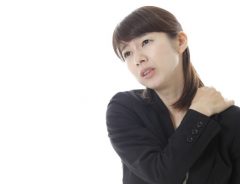
Source: © pxfuel.com
Japanese women face discrimination, victim blaming, harassment as they seek equal rights
- Tags:
- Discrimination / harassment / Sexism / women's issues / women's rights
Related Article
-

Head of the 2020 Tokyo Olympics, Yoshiro Mori, Makes Misogynist Remark
-

Video of Man Intentionally Bumping into Women Causes Increased Security for Japan Railways
-

Unsettling experiences on the train and how a young commuter stepped up [manga]
-

“I saw two men holding hands…”: Japanese store has perfect response to prejudiced complaint
-

Matsui single malt whisky wins Jim Murray’s Whisky Bible top prize
-

Nissin Hopes to Fight “Noodle Harassment” With Slurping Noise-Neutralizing Noodle Fork


At first glance, Japan seems like a modern society. Home to the third-largest world economy, the country is an industrial powerhouse and technology innovator.
During an ongoing labor shortage, female workforce participation is peaking. According to a Brookings Institution report, the labor participation rate of prime-age women surpassed the United States in 2016. The social status of Japan’s women, however, has not improved in tandem. Indeed, there remain numerous rights issues to address.
Workplace Harassment
In recent years, the #KuToo movement spotlighted pervasive workplace harassment in Japan. Led by Yumi Ishikawa, an actress and writer, the campaign aimed at dress codes requiring women to wear high heels. The hashtag trended on twitter and resulted in 150,000 petition signatories as many compared the requirements to foot binding.
More recently, the actress and others admonished glasses bans common in several industries. In this traditional Asian culture, dress codes occasionally prohibit female employees from wearing glasses. Based on outdated notions of beauty, the bans do not apply to male workers.
The outcry against the prohibitions received significant media coverage after trending on Twitter. The Japanese Diet was forced to revise laws surrounding workplace harassment and sexual harassment. These changes, however, lacked punitive measures for enforcement and sidestepped systemic change.
Maternity Leave Harassment
Despite plummeting fertility rates, a workaholic business culture is often hostile to pregnant women. Reports of bullying are commonplace, and matahara, maternal harassment, has spiked in recent history. Female employees who take maternity leave face uncertain employment situations upon returning to work. For the nation’s growing number of temp workers, pregnancy threatens financial stability.
In one well-known case, an Aichi daycare employee was forced to apologize after becoming pregnant "before her turn." The employee was reprimanded for "selfishly breaking the rules" and ignoring timetables laid out by her employer. Ordered by seniority, the schedules detailed when female employees were allowed to marry and become pregnant.
Fortunately, there has been a political backlash. Prime Minister Abe and other politicians have begun encouraging maternity leave. Paternity leave among male workers is also becoming more common after the Minister of the Environment announced he would take child care leave.
Institutional Bias
Economic development throughout the 20th was primarily facilitated by institutions.
Despite modernization, Japan’s institutional support of women remains underdeveloped. Among 149 nations surveyed in the world gender gap index, Japan ranked 110th. Although female literacy rates are robust, female economic and political participation is shockingly disparate. Women are conspicuously absent from business leadership roles, and there is currently a handful of female politicians.
And likely fewer doctors. In 2018, a series of medical school scandals rocked the healthcare industry. On entrance exams, top universities duplicitously assisted male applicants while discriminating against female students. Following the belief that maternity leave and child-care would distract female practitioners, the scandal exposed deep-rooted biases against women in medicine.
Reproductive Rights
As in other areas, Japan lags behind global standards in terms of reproductive rights. Contraception is noticeably lacking as condoms remain the de facto method of birth control. In most situations, male partners determine their use. Although oral contraception became available in 1999, 40 years after other countries, its use is uncommon. Prescriptions, due to restrictions and prohibitive costs, are not covered by national health insurance. As such, they are difficult for many to obtain.
The morning after pill is similarly restricted. With a dose costing 10,000 JPY (about $90), it requires a doctor's visit and a prescription regardless of rape status. Recent legislation may also limit access to already rare abortions. Veiled as an attempt to improve Japan's ailing fertility rate, feminist groups claim the government is aiming to shift the economic burden of child care onto women.
Finally, in a country historically permissive to sexual assault, there is sadly a lack of support for victims. According to activist Catherine Jane Fisher, at the time of her rape, there wasn't a single crisis center in the country. Revictimization and victim-blaming are also typical, leading most assault victims to forego seeking support. Rape kits are also unavailable at most hospitals.
Poverty
Japan is in the midst of an economic transformation as a labor shortage forces employers to rethink payrolls. Although more women are participating in the workforce, their financial clout is not improving.
Most women, due to misconceptions about female responsibility, are appointed temporary or part-time work. Business owners often view women as transient workers who will be burdened by marriage, pregnancy, and child care throughout their employment.
Indeed, the taboo surrounding maternity leave is forcing many women’s hands: either devote themselves to their careers and forego a family, or face uncertain financial prospects. Salaries are also unequal, with women receiving about 70% pay for similar work.
This burden continues throughout retirement. Owing to unbalanced birth rates, the pension program in Japan is notoriously underfunded. As a result, women working part-time jobs at reduced salaries are experiencing budget shortfalls upon leaving the workforce. The poverty rate for single female retirees is estimated to be 50%. The figure is even worse for single mothers.
Casual Sexism
Japan's rigid gender roles support outdated stereotypes. Unchecked, sexist attitudes and remarks go unnoticed. Particularly on online platforms, many women find themselves aggressively ridiculed despite innocuous behavior.
Millennial women, however, are finding inspiration from movements such as #MeToo, #KuToo, and, more recently, the I AM demonstrations. Formed as a reaction to sexist remarks made by the former secretary-general of the Ministry of Finance, the I AM movement took place outside of Shinjuku Station in Tokyo. With so many issues front and center, internet-savvy Millenials are using their voices to influence gender norms. Unfortunately, it seems they have their work cut out for them.